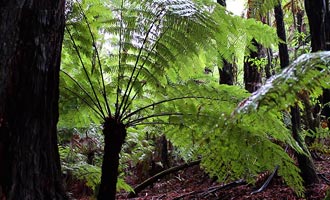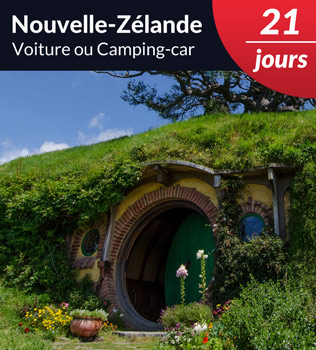
Flora and Wildlife of New Zealand.
Please contact us and we will help you to organize your trip! It's free and without commitment.
- Read the post
- Details
- Advices
Presentation.
- 1An Exceptional Diversity.
- 2Explore Forests Unchanged Since the Dawn of Time.
- 3Contemplate the Millenarian Trees.
- 4Country of the Silver Fern.
- 5A Fragile Ecosystem!
An Exceptional Diversity.
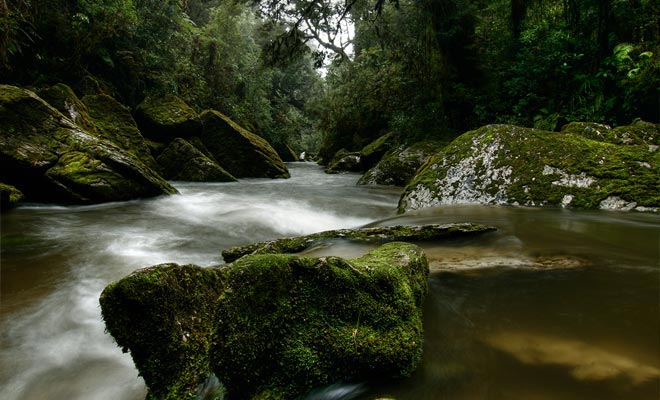
The forests are as beautiful as they are wild.
Before the coming of man, New Zealand was almost completely covered by wild forests. Contemplated from the sky, the country contrasts strongly with the Australian continent ravaged by drought.
The truth is that man reclaimed 70% of the land for pasture.
Fires set by Maori helped to gain large areas, but inadequately controlled fires have reduced entire regions to ashes. It must be acknowledged that British settlers are accountable for the vast majority of the damage caused to nature.
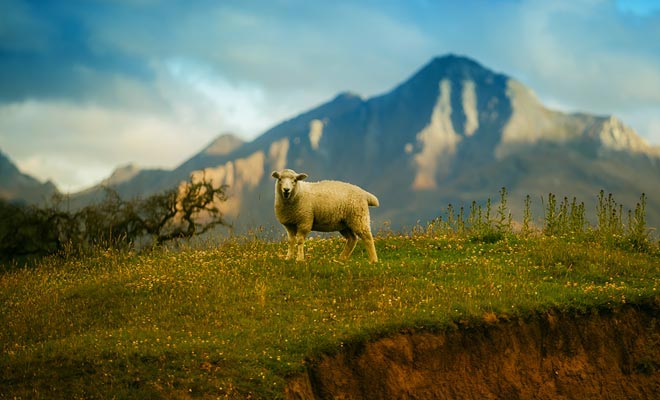
Sheep farming explains deforestation.
New Zealanders became aware of the scale of damage during the last century. Deforestation has ceased, and a true environmentalist consciousness has emerged in the population. The forest regeneration process is underway and a great part of the territory is now under the protection of the DOC (department of conservation).
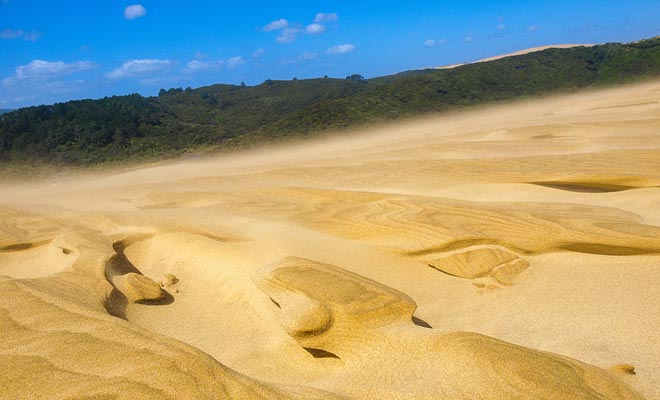
The Te Paki sand dunes at the northern tip of the country.
Despite the damage caused by man, the flora of New Zealand is still large enough to fill an entire encyclopedia.
This is why I will present only the trees and plant species emblematic of the country.
Some surprises are to be expected, because New Zealand remained isolated from the world during millions of years.
One can even find a unique species of blue mushroom in the forest!
Explore Forests Unchanged Since the Dawn of Time.
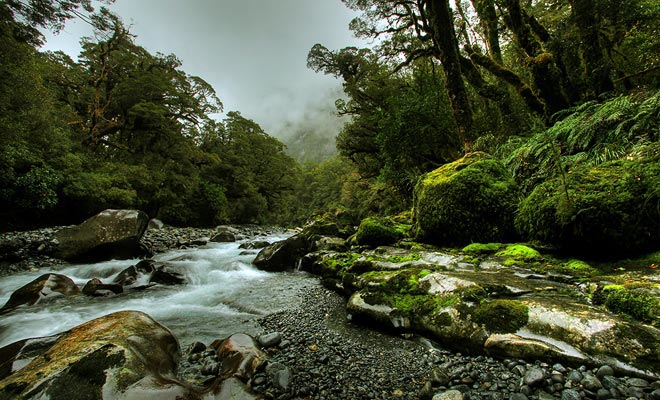
Much of the country has not changed for millennia.
The vegetation of this country at the end of the world remains a mystery to the general public. A godsend for filmmakers who have an endless supply of landscapes.
For a visitor, the wild nature of New Zealand allows to contemplate the Earth as it was in the earliest times before the coming of man.
Impenetrable most of the time, the forests of New Zealand are mainly composed of beech and conifers.
The New Zealand bush grows in hot and humid regions, especially near the mountains.
The scarcity of flowers is balanced by the fact that conifers keep their leaves throughout the year, to the great delight of tourists.
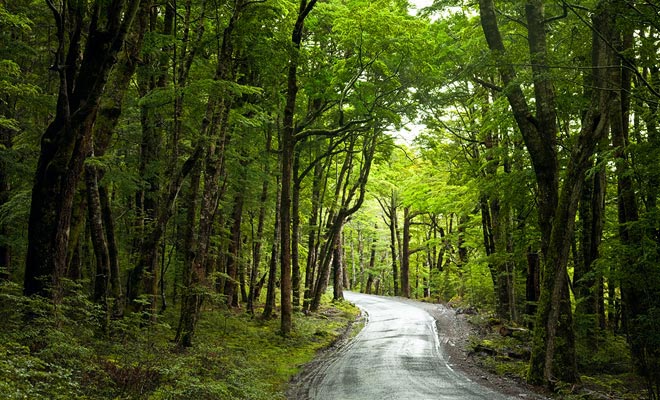
Coniferous forests are typical of the North Island.
As for beech forests, they grow more on the South Island, despite a poor soil and a stronger wind. The exceptional moisture from the West Coast favors black or green moss depending on altitude. The slightest tree trunk is covered by moss, making it the forest even more spectacular, but also more difficult to explore.
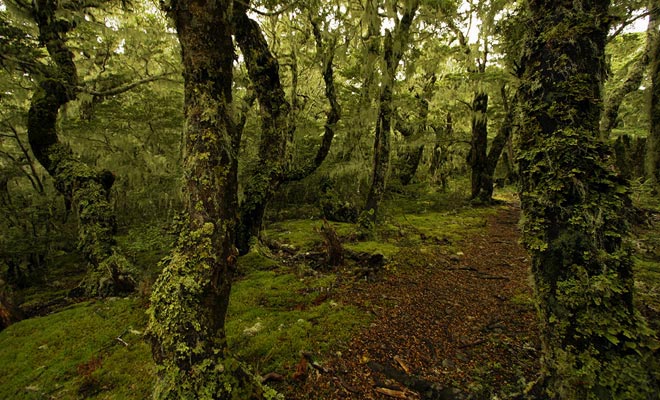
The beech forests are often covered with moss.
There are also forests with trees from all over the world. Not knowing which kind of tree was suitable for the climate, the settlers planted many varieties, and it was the Giant Coastal Redwood which is now emblematic of the Rotorua region.
Contemplate the Millenarian Trees.
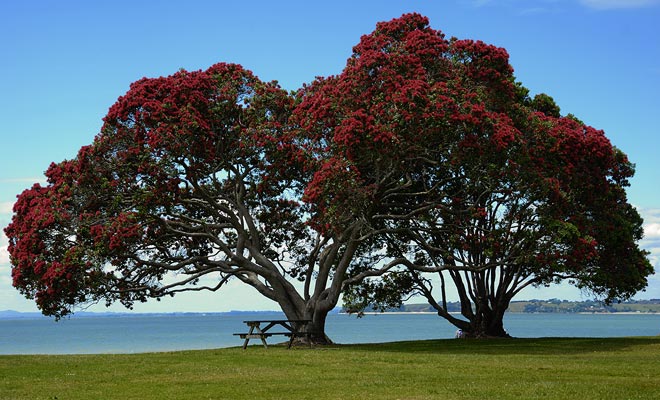
The pohutukawa gives its red flowers during the Christmas holidays.
Four tree species attract the attention of travelers by their strange shapes and singular beauty.
The pohutukawa is nicknamed the Christmas tree because it is covered with red flowers in December (early summer in New Zealand). Often planted in the seaside, the pohutukawa is incredibly photogenic, but there is an even more impressive species.
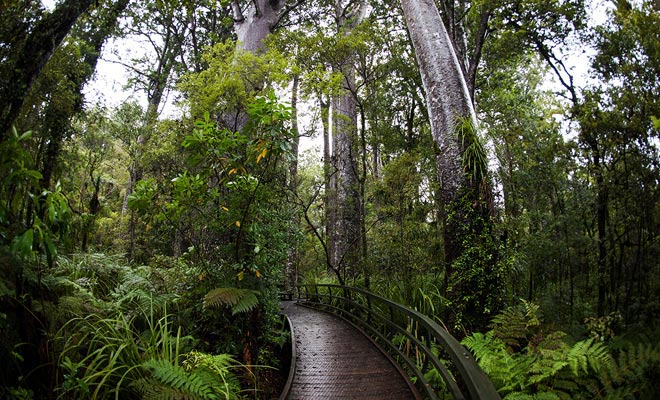
The kauri can live a thousand years.
With a huge trunk reaching 60 m height and spiral leaves, the kauri is a survivor of the legendary continent Gondwana. Its life expectancy occasionally exceeds one thousand years! Alas, frequently used as construction material by the first settlers, it has become rare. The Maoris who venerate this tree will guide you in the sacred forest of Waipoua.
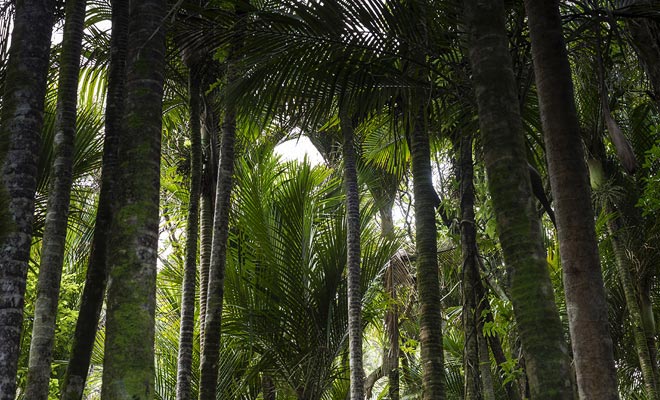
The nikaus palm trees grow in spite of the low latitude.
If the kauri is threatened with extinction, other trees survive against all odds. This is the case of the nikau which should not exist at such a low latitude. Only the subtropical climate of the West Coast allows this palm tree to survive. With a ten meter heights, it has long green palms and gives an exotic look to the Paparoa National Park.

The flowers of the kanuka give an excellent honey.
The powerful wind in the Catlins region gives a strange orientation to the kanuka tree, yet without harming its growth.
This shrub has leaves from which one draws a soothing and fragrant oil. Bees also produce a delicious honey from its tiny white flowers.
The 30% of forest that survived deforestation shelter more than 600 species of plants, nearly all endemic.
Country of the Silver Fern.
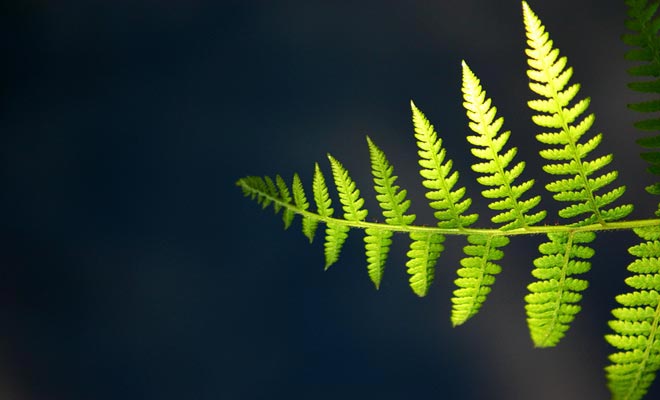
The fern is the official emblem of New Zealand.
This is not a coincidence if the fern is the official emblem of New Zealand! The country own more than 1200 varieties of ferns! Some fall from trees, others grow up to twenty meters high.
The most famous fern is undoubtedly the Silver Fern (cyathea dealbata for the experts). As its name suggests, it has a silvery sheen, and you may have already spotted its presence on the non-official flag of the country or on the Allblacks' jerseys.
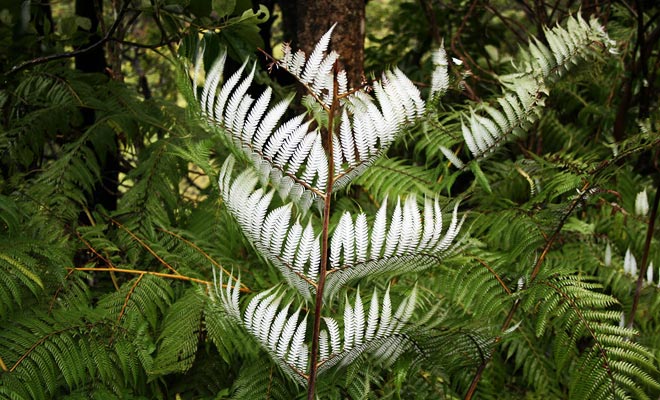
The silver fern is represented on the Allblacks' jerseys.
The seedling of the Silver Fern is called “koru” in the Maori language. Its shape symbolizes both the strength and growth, but also youth and peace. There is a good chance for you to buy a reproduction carved in wood or jade before the end of your stay.
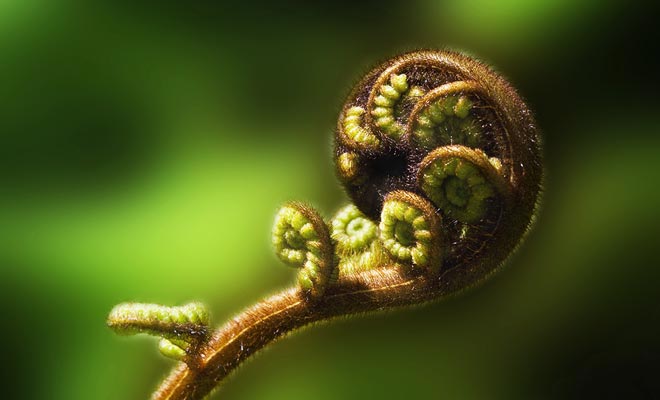
The Koru is a symbol of peace in the Maori tradition.
Also very famous, the Harakeke looks like hemp or flax, but is an endemic and unique species in the world. Its long green leaves that spring from the soil, give birth to a striking bouquet!
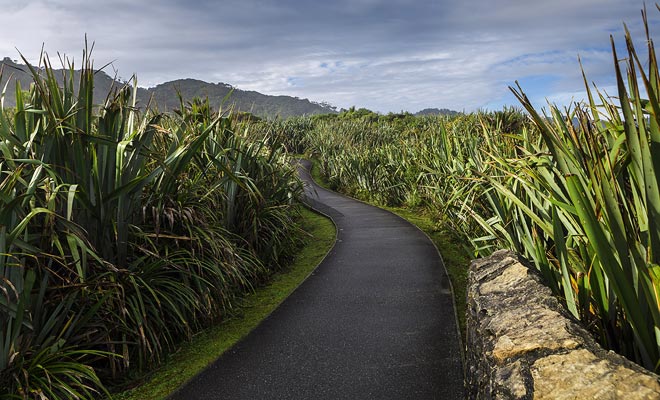
The flax is still used by artisans.
The Maoris were already using the flax to make bags and baskets long before Westerners discovered how to create ropes and canvas with it.
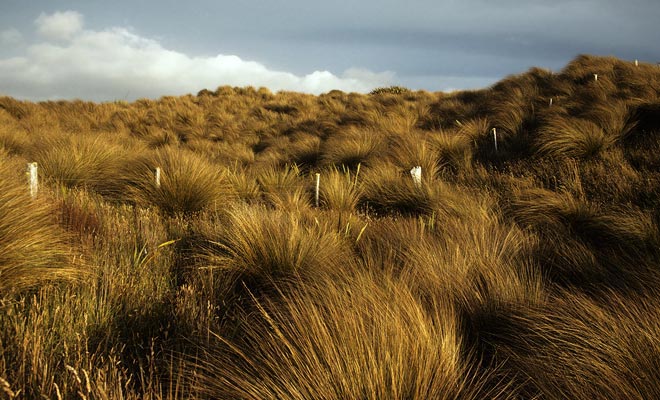
The tussock swept by the wind resembles a rough sea.
I saved one of the best for the end, the tussock is an incredibly resistant high grass, growing in yellow tufts. Often windswept, the plains of tussocks instantly recall the grandiose scenery of the Lord of the Rings.
A Fragile Ecosystem!
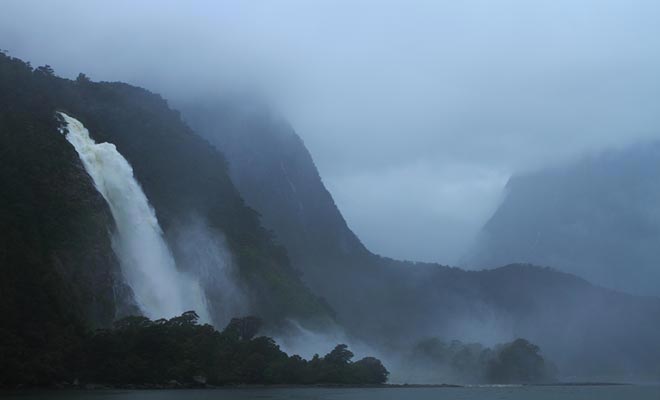
The South Island remains largely wild.
If the New Zealand Nature is incredibly beautiful, it remains wild and daunting. The “Man Versus Wild” TV show has even dedicated two episodes to the Fiordland region in the South Island.
While watching Bear Grylls trying to survive in the Fiordland, one understand why the man has deforested much of the territory. Of course, this is not an excuse for what both Maori and settlers did, but survival has its own rules and leaves few times to protect the nature.
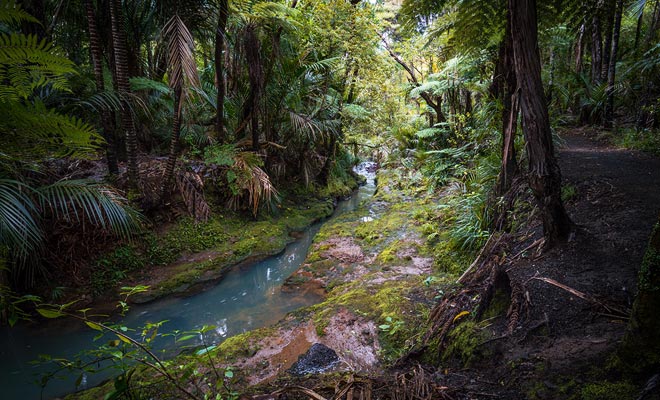
The Fiordland is one of the wettest regions of the globe.
The Kiwis were seeking forgiveness and were the first to establish national parks. There are 14 national parks, covering 12% of the New Zealand territory, nearly 3 million hectares! One must consider the 19 other forest parks and the three marine parks, to get an overview of the efforts undertaken to protect nature, establishing thousands of kilometers of exceptional hiking trails.

National parks allow you to discover nature safely.
Another proof of this policy change is the biosecurity implementation at the airport which aims to protect the ecosystem against any external threat. If nature is so fragile in New Zealand, this is mainly because of the isolation. Before the coming of man, there was no mammal living in the two islands of the country. Plants and trees had no time to develop natural defenses against new species introduced in the country during past centuries.
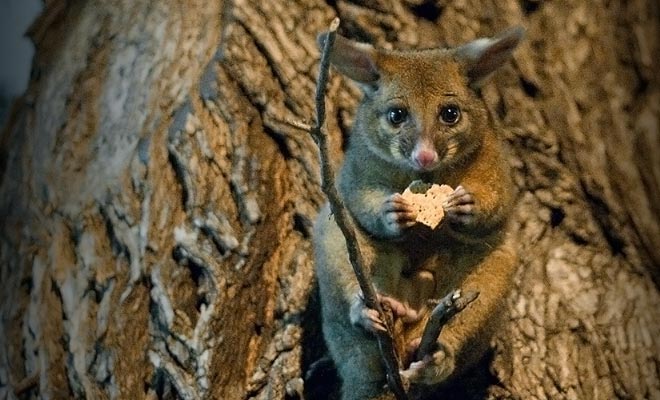
Do not feed the possums, they already have plenty to eat.
To give you an idea, the government invests $ 100 million each year in an effort to eradicate possums.
These little animals which proliferate by million can ravage a hectare of forest each day.
Another good reason for taking care of nature during your stay.
Giving a few dollars to help the restoration of a New Zealand forest is perhaps the best way to show how much you love the country.


Questions & Answers.

What can I do for you? There are so many varieties of plants and trees endemic to New Zealand that you will necessarily be asking yourself questions. I am here to help!
- All topics ... 9 answers in total
- Wild Nature 4 answers
- Ecology 3 answers
- Ferns 2 answers
Wild Nature
- Has nature really remained wild?
New Zealand experienced major periods of deforestation. Fortunately, much of the country remained intact and now attached to national parks. In these places, nature has remained unchanged for thousands of years.
- During what season does the Pohutukawa flourish?
The pohutukawa gives its magnificent red flowers during the holiday season. Hence his nickname of the Christmas tree!
- How many centuries can a Kauri tree live?
Some kauris can live more than a thousand years.
- How many national parks are there?
There are 14 large national parks covering 25,000 square kilometers. Four of them are on the North Island and the rest on the South Island.
Ecology
- How can we help the reforestation of the country?
You can finance the planting of a tree, especially at Cape Reinga.
- Why is there a desert in the north of the country?
The Te Paki dunes have been formed due to deforestation.
- Is it allowed to feed possums?
This small rodent belongs to a protected species in Australia. But in New Zealand, it is proliferating with such rapidity that the government has undertaken to carry out eradication campaigns. You are not allowed to feed the possums (they do not lack anything since they devour entire forests).
Ferns
- Why is the fern the emblem of the country?
There are several hundred varieties of ferns in the country.
- What kind of fern is present on the flag of the country?
This is the famous silver fern.

